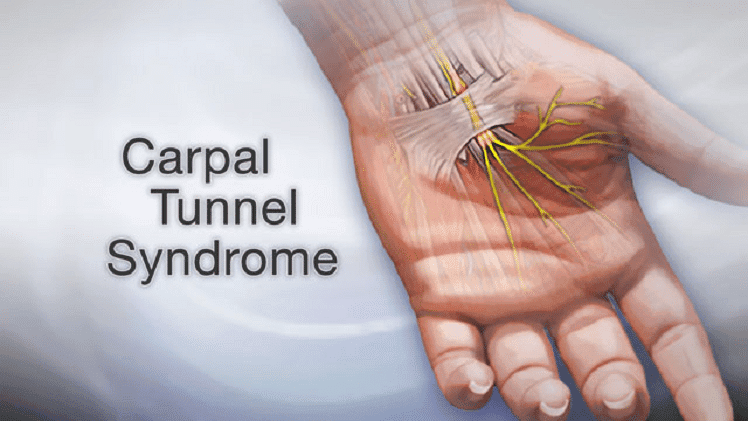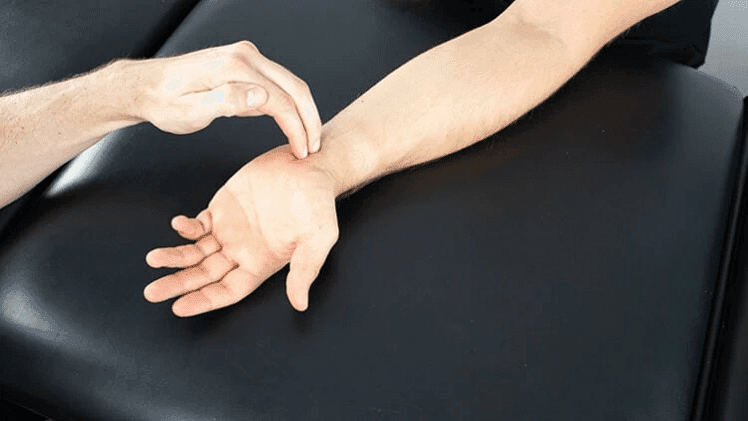Documenting Carpal Tunnel Syndrome with ICD-10 and CPT Codes

Introduction
Carpal Tunnel Syndrome ICD 10 (CTS) is one of the most common musculoskeletal conditions affecting the hand and wrist. Accurate documentation of this condition is crucial for diagnosis, treatment, and reimbursement. By leveraging standardized medical coding systems like ICD-10 and CPT, healthcare providers can ensure proper billing and streamline communication among medical professionals.
This guide will delve into the essentials of documenting Carpal Tunnel Syndrome (CTS) using ICD-10 and CPT codes, provide key coding guidelines, and highlight best practices to ensure accuracy.
Understanding Carpal Tunnel Syndrome (CTS)
Carpal Tunnel Syndrome is a condition caused by compression of the median nerve as it passes through the carpal tunnel in the wrist. This condition often leads to symptoms such as pain, tingling, numbness, and weakness in the hand and fingers.

Key Causes of Carpal Tunnel Syndrome:
- Repetitive hand and wrist movements (e.g., typing, assembly line work).
- Wrist injuries or fractures.
- Underlying conditions like arthritis or diabetes.
- Pregnancy-related swelling.
Proper documentation of CTS begins with understanding its symptoms, diagnosis, and treatment procedures.
ICD-10 Codes for Carpal Tunnel Syndrome
ICD-10 (International Classification of Diseases, 10th Revision) codes are used to classify and code diseases and medical conditions. For Carpal Tunnel Syndrome, the specific code depends on the nature and laterality of the condition.
| ICD-10 Code | Description |
|---|---|
| G56.01 | Carpal Tunnel Syndrome, right upper limb |
| G56.02 | Carpal Tunnel Syndrome, left upper limb |
| G56.03 | Carpal Tunnel Syndrome, bilateral upper limbs |
| G56.00 | Carpal Tunnel Syndrome, unspecified upper limb |
Key Points to Remember:
- Laterality Matters: Ensure that documentation specifies whether the condition affects the right, left, or both limbs.
- Unspecified Code Use: Avoid using unspecified codes (e.g., G56.00) unless the documentation lacks specific details.
- Chronic vs. Acute: ICD-10 codes for CTS do not differentiate between acute or chronic cases; additional notes in the medical record can clarify this.
CPT Codes for Carpal Tunnel Syndrome
CPT (Current Procedural Terminology) codes** are used to document medical, surgical, and diagnostic procedures. For Carpal Tunnel Syndrome, the CPT codes vary depending on the type of service or procedure performed.
| CPT Code | Procedure Description |
|---|---|
| 20526 | Injection of therapeutic substances (e.g., corticosteroids) into the carpal tunnel. |
| 64721 | Carpal tunnel release surgery. |
| 95907-95913 | Nerve conduction studies for evaluating median nerve function. |
| 95860 | Electromyography (EMG) of one extremity to assess muscle and nerve function. |
Key Considerations for CPT Coding:
- Diagnostic Studies: Codes like 95907-95913 or 95860 are used for confirming the diagnosis of CTS through nerve conduction or EMG studies.
- Injection Procedures: If corticosteroid injections are administered, 20526 is the appropriate CPT code.
- Surgical Procedures: For carpal tunnel release, 64721 is widely used, but additional modifiers (e.g., bilateral, assistant surgeon) may apply based on the surgical context.
Steps for Accurate Documentation of Carpal Tunnel Syndrome
To ensure proper coding and billing, follow these steps when documenting Carpal Tunnel Syndrome:
Detailed Patient History
- Document the patient’s symptoms, including pain, numbness, tingling, and weakness.
- Include details about activities or conditions contributing to CTS (e.g., typing, diabetes).
Physical Examination
- Record findings such as Tinel’s sign (tingling when tapping the wrist) or Phalen’s test (symptom reproduction when flexing the wrist).
Diagnostic Studies
- Include results from diagnostic tests like nerve conduction studies (CPT 95907-95913) or electromyography (CPT 95860).
Treatment Plan
- Specify the type of treatment (e.g., wrist splints, corticosteroid injections, surgery).
- Include the corresponding CPT codes for procedures performed.
Specify Laterality and Severity
- Clearly document which hand(s) is affected and the severity of the condition (mild, moderate, or severe).
Follow ICD-10 and CPT Guidelines
- Match the ICD-10 codes for diagnosis with the appropriate CPT codes for services rendered.
- Ensure consistency between medical notes and coding.
Comparison: ICD-10 and CPT Codes for Carpal Tunnel Syndrome
| Aspect | ICD-10 Codes | CPT Codes |
|---|---|---|
| Purpose | Classifies the diagnosis (CTS) | Documents the procedures or treatments performed |
| Examples | G56.01, G56.02, G56.03 | 20526, 64721, 95907-95913 |
| Laterality | Specifies affected hand(s) | Not typically dependent on laterality |
| Focus | Diagnosis coding | Procedural coding |
| Combination Requirement | Requires appropriate pairing with CPT codes | Requires appropriate pairing with ICD-10 codes |
Common Documentation Errors to Avoid
- Using Unspecified Codes
- Always document laterality (right, left, or bilateral) to avoid unspecified codes like G56.00.
- Incomplete Diagnostic Information
- Failing to include nerve conduction or EMG results can lead to denied claims.
- Mismatched Codes
- Ensure that ICD-10 and CPT codes align correctly for the diagnosis and procedures performed.
- Missing Modifiers
- For surgical procedures like bilateral carpal tunnel release, include appropriate modifiers (e.g., -50 for bilateral procedures).
FAQs about Documenting Carpal Tunnel Syndrome
1. What is the ICD-10 code for Carpal Tunnel Syndrome affecting both hands?
The ICD-10 code for bilateral Carpal Tunnel Syndrome is G56.03.
2. Which CPT code is used for Carpal Tunnel Release Surgery?
The CPT code for carpal tunnel release surgery is 64721.
3. Are nerve conduction studies always required for diagnosing CTS?
While not mandatory, nerve conduction studies (CPT 95907-95913) are highly recommended for confirming CTS and providing objective evidence.
4. How can I avoid using unspecified codes for CTS?
Document the affected hand(s) (right, left, or both) and include detailed diagnostic findings to avoid unspecified codes like G56.00.
5. What is the CPT code for corticosteroid injection into the carpal tunnel?
The CPT code for a therapeutic injection into the carpal tunnel is 20526.
Conclusion
Proper documentation of Carpal Tunnel Syndrome with ICD-10 and CPT codes ensures accurate diagnosis, effective treatment planning, and successful reimbursement. By understanding the coding guidelines, healthcare providers can minimize errors, improve patient care, and ensure compliance with billing standards.
Whether you’re diagnosing CTS, administering corticosteroid injections, or performing carpal tunnel release surgery, following the steps outlined in this guide will streamline your documentation process.





